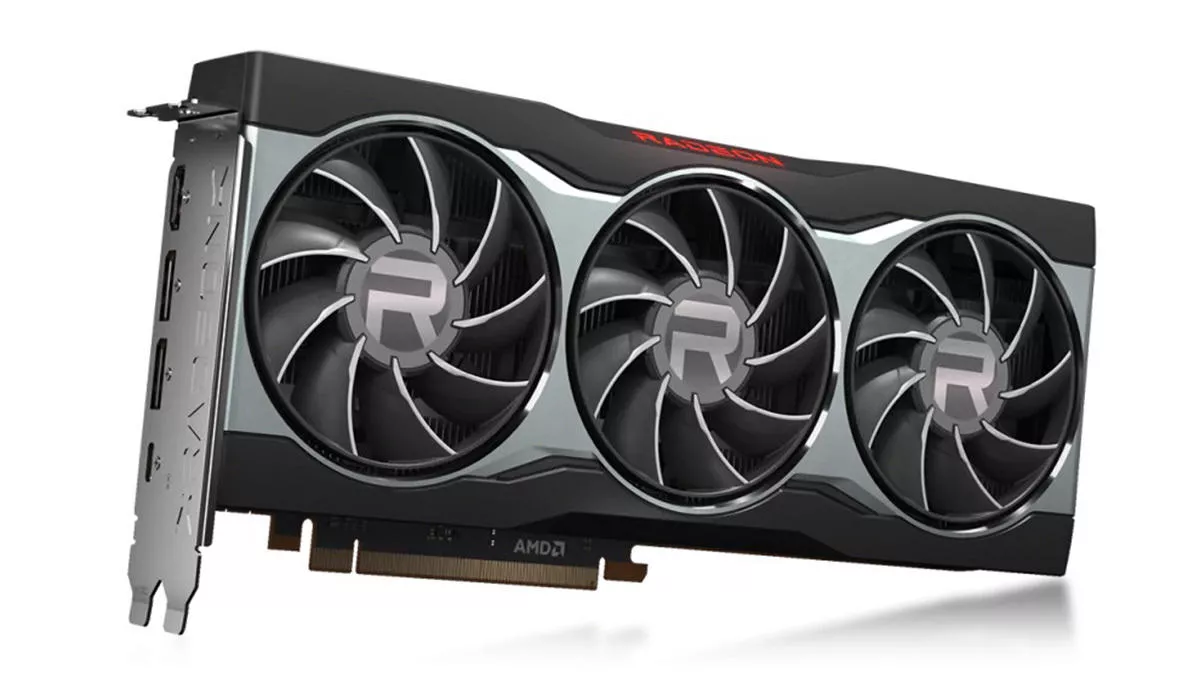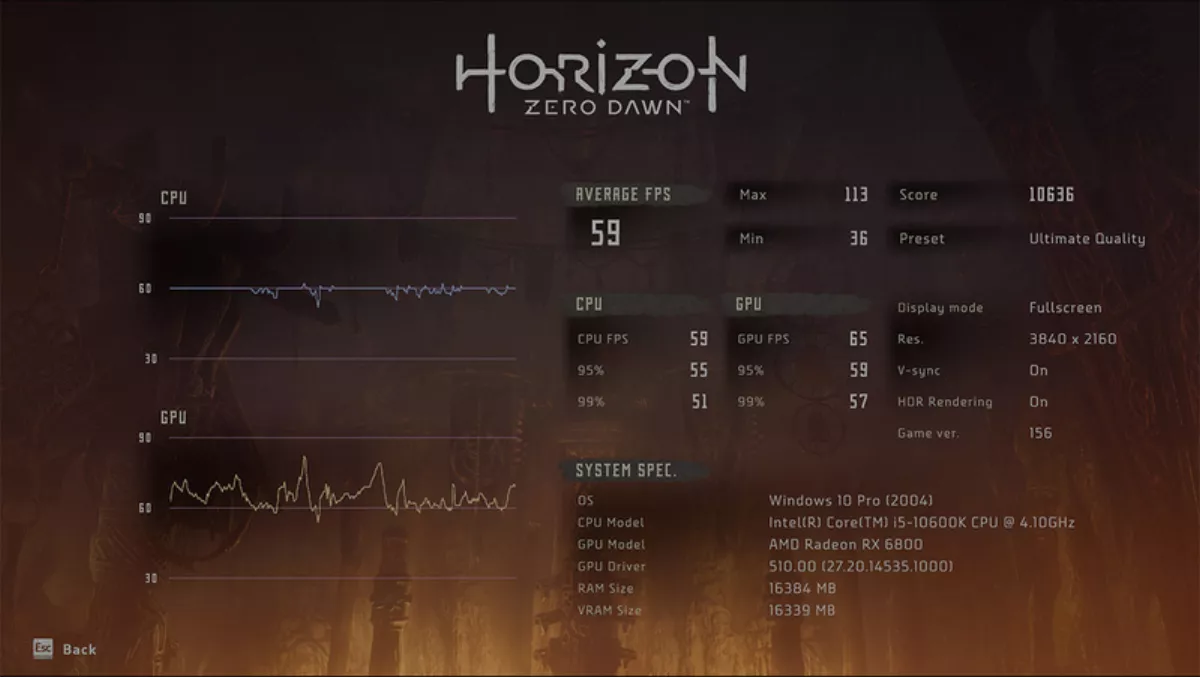
Hands-on review: AMD Radeon RX 6800
AMD's Radeon RX 6800 is a DirectX 12 Ultimate compatible graphics card, ready to power the upcoming games that will utilise Microsoft's newest gaming technology.
On-board, the card has a whopping 16Gb of GDDR6. The Radeon RX 6800 has three fans to keep it cool. Without listing loads of numbers, it's a pretty powerful graphics card. The downside to this is that it draws 250W and needs, at the very minimum, a 650W power supply. I'd say though, for a modern gaming rig, anything less than an 850W PSU is likely to cause problems, anyway.
As someone that tends to sit in Nvidia's green camp when it comes to GPUs, the opportunity to sample the wares of "the other side", with an AMD Radeon RX 6800, comes with a mixture of excitement and apprehension. This is not just because I've almost slavishly followed Nvidia with my wallet for the past two decades, and a little nervous that I'm now backing the wrong horse, but also because clearing out the GeForce drivers on the test rig and replacing them with AMD's is a chore fraught with issues in itself.
As a tech reviewer, I'm no stranger to AMD's GPUs, however, it's not since the days of ATi that I've felt the need to place one of its GPUs in my actual gaming rig. Don't get me wrong, AMD's GPUs offer excellent value-for-money. But in the PC world, with its unfortunately high price of entry, your machine is only as good as its weakest part. And whilst AMD is hot on the heels of Intel with its Ryzan CPUs, when it comes to GPUs, AMD continues playing catchup with Nvidia.
The AMD review sample was powered via two 8-pin PCIe connectors. On the back of the card, there were outputs for one HDMI 2.1 cable (supporting 4K), two DisplayPort 1.4 cables, and a USB Type-C. All told, not bad, allowing for up to four displays.
Installing the Radeon RX 6800 was relatively painless. The test rig, formally hosting an Nvidia RTX 2080 TI had been running on the integrated graphics on board the Intel i5 10600K for a few weeks testing some non-gaming kit. Inserting the AMD GPU resulted in a boot failure- something that I'm not unfamiliar with messing with multiple components on a regular basis. A quick BIOS reset and the PC was up and running with the new GPU.

AMD has gone down the same route as Nvidia with its Adrenalin software. This unified driver and optimisation application not only ensures that users are running the latest AMD drivers but also optimises installed games based on the available hardware.
Testing the GPU with 3D Mark yielded an excellent graphics score of 14865, suggesting that the set-up should be capable of 140+ FPS running Battlefield V at 1440p with Ultra settings. No to be sneezed at. I also ran the benchmark with a similar system equipped with an Nvidia RTX 2080 Ti and scored 14603. The two cards are performance-wise, virtually identical.
I tested the Radeon RX 6800 with the new Microsoft Flight Simulator. The card had no problem maintaining a decent framerate at 4K resolution with HDR and the settings on ultra. I'll be honest, I was surprised. MSFS can bring even the mightiest machines to their knees.
Next up I tested Guerrilla Game's Horizon Zero Dawn, not only because it is a beautiful-looking game, but it also has a good real-world built-in benchmark. Again, the RX 6800's performance was impressive. The game played smoothly in 4K HDR with all the settings turned up to ultra. The benchmark registered a very agreeable 59fps average dipping to 36fps only a couple of times and maxing out at 113fps. Pretty much perfect.

The Radeon RX 6800's 16 GB of onboard memory beats any card at a similar price-point. As a gaming GPU, the performance is more than enough for today's (and tomorrow's) games. Even 4K gaming is achievable, but I wouldn't rely on this being the case with all games.
On paper, the Radeon RX 6800 offers the performance of an 18-month-old Nvidia GPU for half the price that the RTX 2080 Ti was new. At the moment, the price and performance just about matches that of the Nvidia RTX 3070 but without the Nvidia RTX cores for real-time raytracing.
It's still a matter of debate as to what exactly ray-tracing adds to a game. Real-time ray-tracing does look good, but, even with a top-of-the-range Nvidia GPU, the performance hit is substantial. If I'm being honest, Nvidia's much-lauded DLSS (deep-learning super-sampling) is really only a crafty way to upscale a lower resolution image to get a decent framerate with "RTX on". The RX 6800's lack of RTX capabilities does put it at a disadvantage, but not as much as Nvidia would like you to believe.
On the plus side, the Radeon RX 6800 is compatible with nearly two-thousand monitors that support Freesync, AMD's v-sync/screen-tearing solution for faster and more responsive gaming. Generally, Freesync monitors are a lot cheaper than their Nvidia G-Sync counterparts.
I wasn't expecting much from the AMD Radeon RX 6800, but it turned out to be more than capable of running today's (and tomorrow's) games. It's not the best GPU you can buy, but it's also not the most expensive. AMD devotees will appreciate the raw power of the GPU over its predecessors, and for non-RTX functions, it just noses ahead of the Nvidia's former flagship, the RTX 2080 Ti.
The AMD Radeon RX 6800 is a powerful GPU suitable for anyone looking for a video card to power their gaming rig. You are not going to get much change out of AU$1200/NZ$1400 for an RX 6800. The real competition for the card at this price point is the Nvidia RTX 3070. Though there's not much in it. Certainly, if you are thinking of picking up a new, reasonably-priced high-end GPU, the Radeon RX 6800 is something you should consider.


